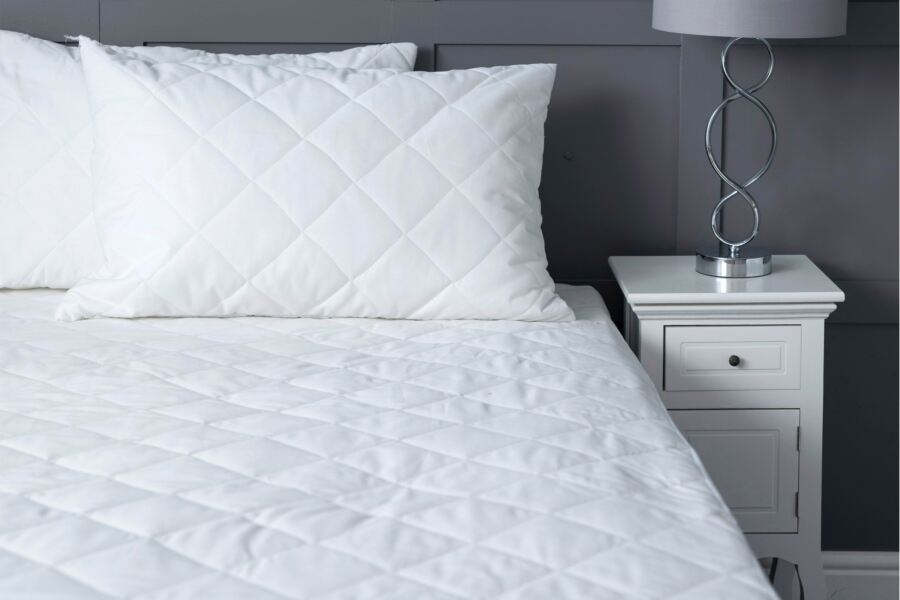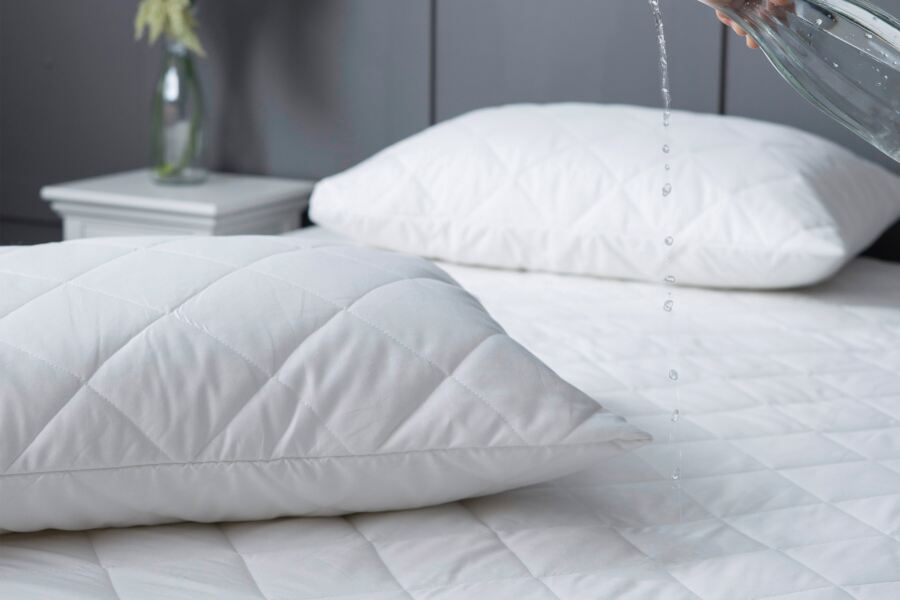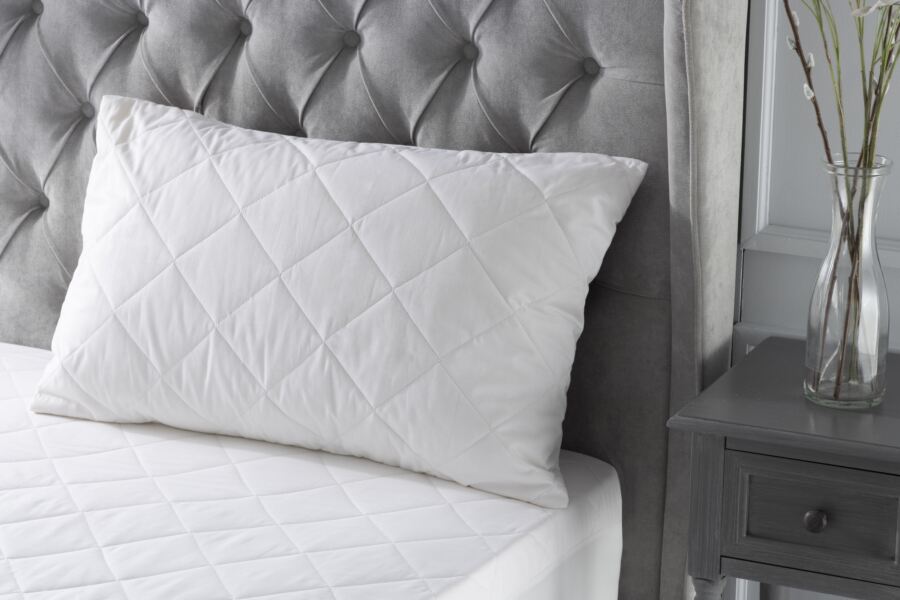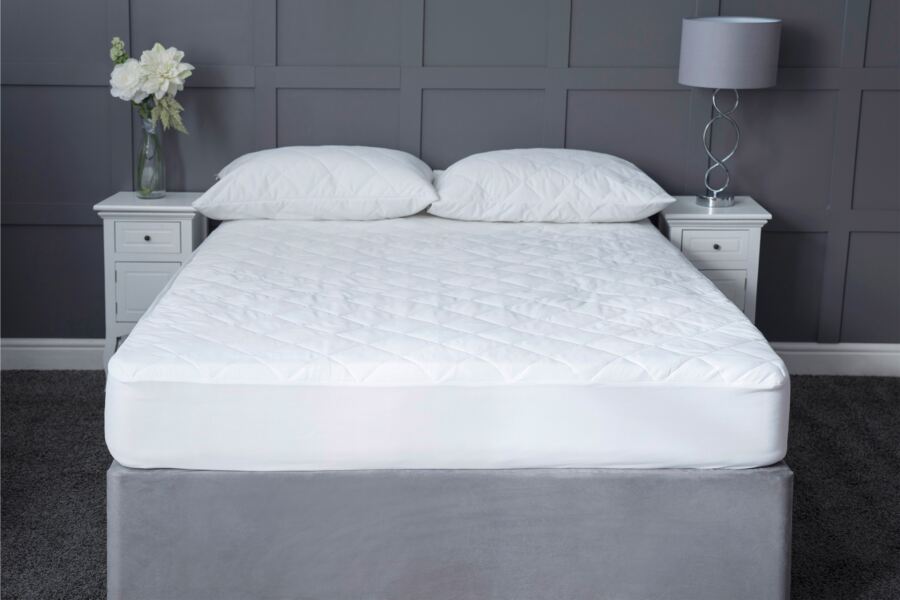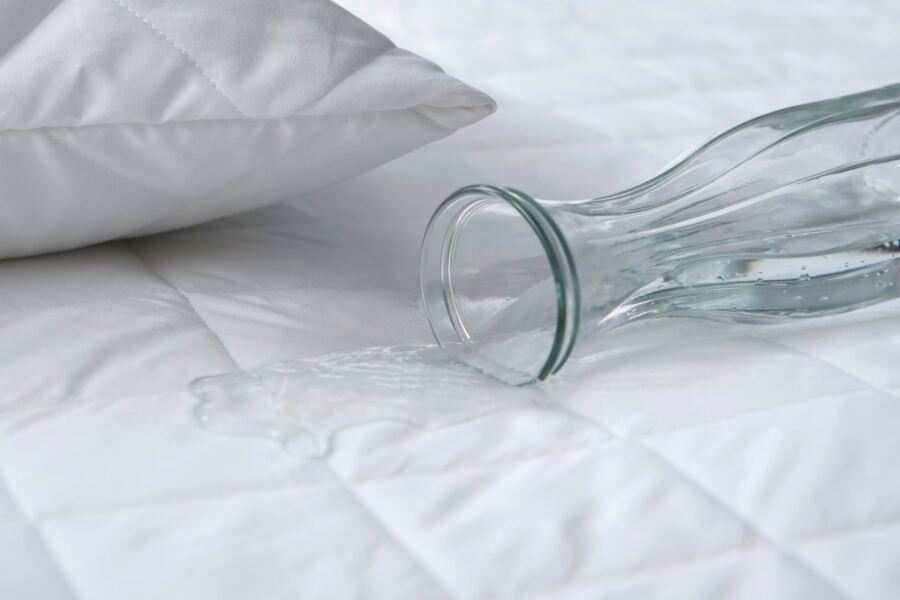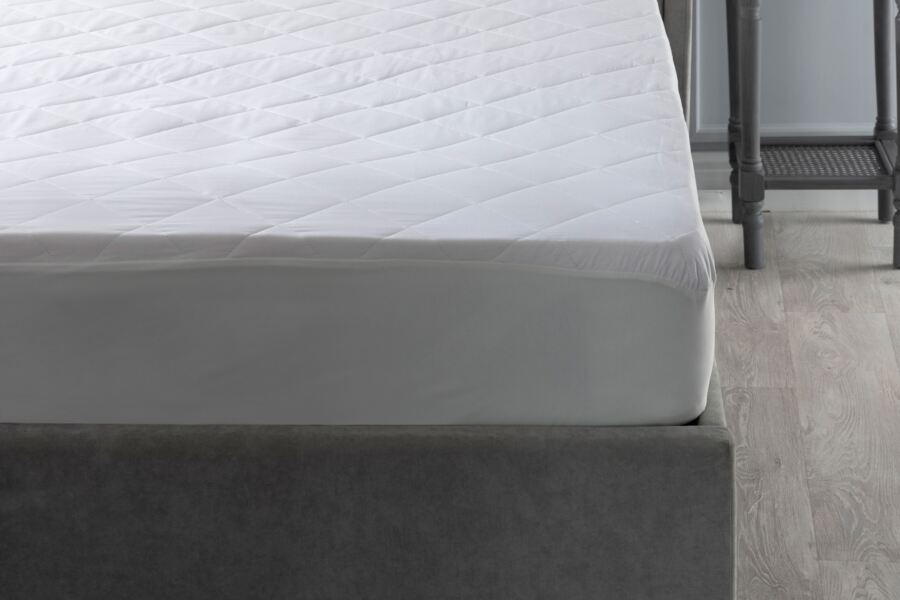Table of Contents
Your bed is supposed to be a place of comfort and relaxation, so the last thing you want is a bed bug infestation. Bed bugs are more than a minor irritation: their itchy bites can lead to skin infections, while their presence can disrupt your sleep in the long term.
At Belledorm, we want you to get the best night's sleep possible. We've created this article detailing how to get rid of bed bugs so you can get back to sleeping well as soon as possible.

Have I Got Bed Bugs?
Before you get rid of bed bugs, you've got to find out if you've actually got them first.
A bed bug infestation is normally pretty self-evident. If you're experiencing disrupted nights of sleep and waking up with lots of bites over your body, you've got a serious bed bug infestation on your hands. Even worse, if you see wingless, reddish-brown bugs crawling around your bed, you've got a big problem.
Bites
Bed bugs survive on the blood of warm-blooded animals. So, any exposed area of your body is a prime target for bed bugs. Most commonly, bed bugs attack your arms, legs, and face. Bed bug bites are mainly red with a clear centre, and are slightly raised. Although, some bites can be flat with a darker centre. These bites will often be itchy, but in rare cases may cause a burning sensation.
Blood on your bedding
Check your bedding for signs of blood. This could appear on top of the sheets themselves, or near the seams of your bedding. These blood stains could be signs of bedbugs. The blood could either be caused by blood from your bites or by you squashing bed bugs in your sleep. It would also be worth checking other upholstered furniture.
A musty odour
Bed bugs give off a sweet, musty odour to communicate with each other. If you smell a particularly strong musty scent, you may have a serious bed bug infestation to deal with.
Debris
If you can't spot the bed bugs themselves, you may be able to identify the debris they leave behind. If you notice a line of small brown spots over your bedding, this could be evidence of bed bug faeces. Bed bugs also shed their outer shells, so if you find loads of tiny bug exoskeletons around your furniture, it could be further evidence of an infestation.
Eggs
If you've got an extra keen eye, you may be able to spot evidence of bed bug eggs. Eggs can be found in the cracks and crevices of your bedding. They will be white, oval, and clustered together.
How to Kill Bed Bugs: A Step-By-Step Guide
When you've got bed bugs, you likely want to get rid of them sooner rather than later. So, to save you time, we'll jump straight to our step-by-step guide on how to get rid of bed bugs.
1. Identify nests
Knowing exactly where your bed bugs hide is crucial to effectively getting rid of them. However, given their size, finding where they live is a challenging task.
As aforementioned, you can identify bed bugs by blood on your bedding and by their debris and eggs. Look out for areas of your bedding and furniture where these signs are particularly common. For example, if you can identify eggs, you can guarantee that the bed bug nest is nearby.
To increase your chances of finding them, make sure to inspect the following areas:
-
Cracks in the bed frame and headboard
-
In the seams of your mattress
-
Furniture joints
-
Inside electrical outlets (carefully)
-
In the seam between the wallpaper and the wall
-
Underneath posters and picture frames on the wall
-
Cracks in the windows and doors
-
Carpets and floor coverings such as rugs
You should use a magnifying glass and torch when inspecting these areas.
2. Curb the infestation with a hoover
The next step of bed bug control is to remove as many bed bugs as possible before laying down treatment. The best means of doing this would be to use a hoover. Go over all the areas you identified as potential nests and hoover the surrounding areas. Once finished, empty the hoover into your bin and give the hoover itself a thorough clean.
3. Wash bedsheets and furniture
Next, remove everything that can be washed from your bed. If you've identified bed bug infestations in other furniture, remove what can be washed. Place all the to-be-washed items in a plastic bag and seal it.
Once the furniture is bare, it would be worth going over each furniture item again and repeating the process detailed in step 2.
Empty the contents of the plastic bag directly into your washing machine and put it on a long spin at the maximum temperature. For items that can't be washed at the maximum temperature, be sure to dry them at the maximum temperature.
For items that can't be washed or dried, seal them in an air-tight bag and store them somewhere safe. Ideally, somewhere far from your bedroom. You'll have to leave these items here for a few months to allow the colony to die.
4. Bed bug treatment preparation
Remove all items lying around your floor or under your bed. During this step, you may find further evidence of bed bugs. If you identify any other items that may be harbouring bed bugs, repeat steps 2 and 3. With regards to clothes, it would be best to stick these through a wash and dry just to be on the safe side.
Next, seal up cracks and crevices, seal loose wallpaper, and tape over any exposed electrical outlets.
Lastly, move your bed to the centre of your room, away from the wall.
5. Bed bug treatment methods
There are several bed bug treatment methods you could use, including heat treatments and chemical treatments. You can try out one method or several, depending on how severe your bed bug infestation is.
Heat treatments
Besides washing and drying your bed sheets, clothes, etc. at a high temperature, you could also use a steamer on the furniture and other items in your room that can't be washed. Apply the steamer nozzle to areas where bed bugs are likely hiding and release steam.
Chemical treatments
You've got a wide range of options when it comes to chemical treatments, including pyrethrins, pyrethroids, pyrroles, neonicotinoids, and desiccants. You can apply these chemicals to the infected areas to kill off any surviving bed bugs.
The best way to apply these chemicals would be to buy a good quality insecticide spray. However, be sure to use an insecticide powder in electrical areas.
Some chemical sprays can be harmful to humans and pets, including the likes of pyrroles. When applying any form of insecticide, it's important to close off the room. The main downside of chemical treatments like pyrrols is that you'll be unable to use the bedroom for the time being. After applying an insecticide to a bed frame, you'll have to leave it for a few weeks to work.
However, if you use a safe non-toxic chemical treatment, you could use the bedroom straight after. It's encouraged to do so, as the body heat will encourage the bed bugs to leave their nests and, hopefully, ingest the chemicals.
6. Monitor success and prevent further infestation
If the bed bugs persist, you should use a different chemical or heat treatment. If that doesn't work, you might need to use the services of a professional exterminator.
Getting rid of bed bugs isn't something you'd like to go through again - so you should make preparations to ensure it doesn't happen again. You could place bedbug interceptors underneath your bed legs, which will capture bed bugs before they reach your bed. You should also buy a good-quality mattress protector to prevent the bugs from getting near your skin.
Another good idea would be to invest in a waterproof mattress protector. This will help you prevent damp areas from forming (bed bugs like a combination of excessive heat and moisture).
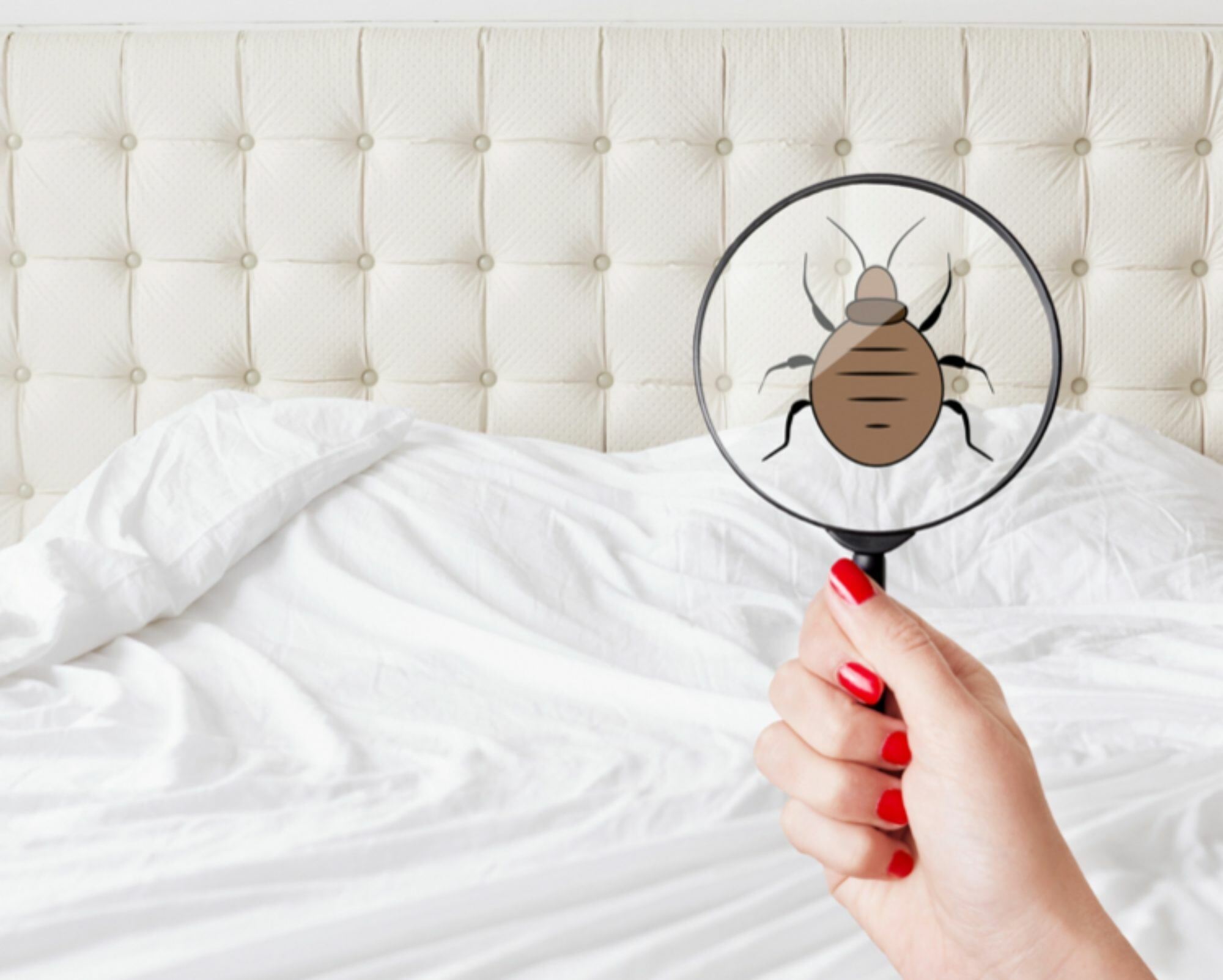
FAQs
How do you stop bed bug infestations quickly?
To get rid of bed bugs, you should wash all your bed sheets at a high temperature and then use a steamer to kill all the bugs in your mattress and bed frames.
Do bed bugs stay in rooms where nobody sleeps?
Bed bugs can stay in rooms where nobody sleeps, however, not for very long. Once they realize there are no blood meals in the area, the bugs will move to a room where there is.
Final Thoughts
To get rid of bed bugs, you need to hoover infested areas, and then apply either a chemical or heat treatment to the areas affected. Not only is it hard to kill bed bugs, but it's also difficult to keep them away. Make sure your bedroom is bed bug-proof with effective bedsheets and interceptors put in place.

